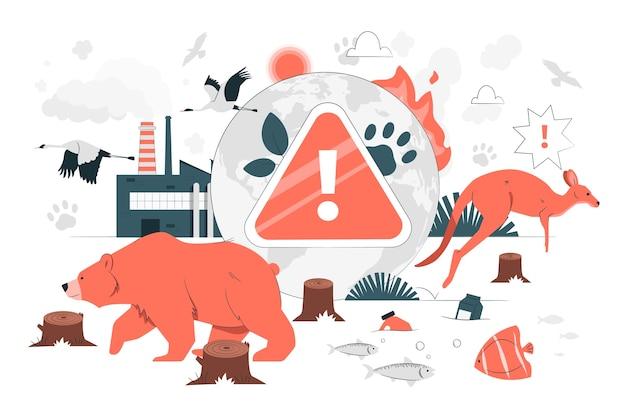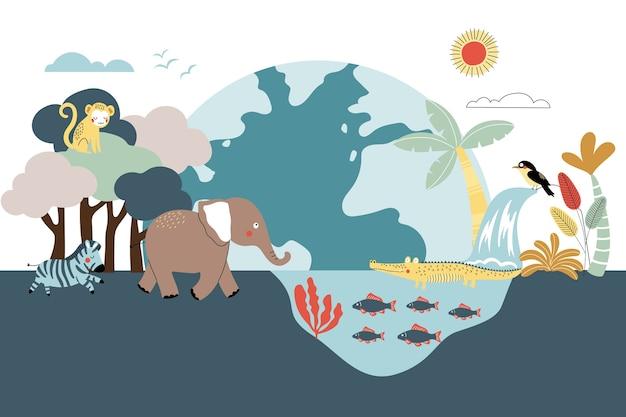Human activities have greatly impacted Earth’s biodiversity, putting numerous species at risk of extinction. As our planet faces the challenges of habitat destruction, climate change, pollution, and more, it becomes crucial to explore the most effective methods to preserve species diversity. In this blog post, we will delve into the various aspects of species preservation, ranging from understanding the threats to biodiversity to discovering the most successful preservation strategies.
With the rapid loss of habitats around the world, understanding the direct threats to biodiversity is essential. We will explore the detrimental effects of human activities, such as deforestation and pollution, on different ecosystems. By identifying the primary causes of biodiversity loss, we can pave the way for targeted conservation efforts.
Moreover, we will delve into the significance of species diversity by investigating the most biodiverse ecosystems on Earth, as well as regions with the least biodiversity. Understanding the consequences of losing biodiversity will further emphasize the urgency behind preservation efforts.
So, let’s embark on this journey of exploring the most effective ways to preserve and protect species diversity in 2023.

What Is the Most Effective Way to Preserve Species Diversity?
The Power of Conservation Efforts
Preserving species diversity is not an easy task, but it’s crucial for a healthy and balanced ecosystem. Fortunately, there are several effective methods that can contribute to the conservation of our planet’s rich biodiversity. Let’s explore some of the most impactful strategies below.
Protecting Natural Habitats
One of the most fundamental ways to preserve species diversity is by protecting natural habitats. These habitats are the homes and breeding grounds for countless organisms, from the smallest insects to the mighty apex predators. By safeguarding these areas, we can ensure the survival of a wide array of species.
Combating Climate Change
Climate change poses a significant threat to species diversity worldwide. Rising temperatures, habitat loss, and extreme weather events can put many species at risk of extinction. To address this, it’s essential to combat climate change through measures like reducing greenhouse gas emissions, transitioning to renewable energy sources, and supporting sustainable practices.
Curbing Illegal Wildlife Trade
Illegal wildlife trade not only threatens individual species but also undermines entire ecosystems. From exotic pets to animal parts used in traditional medicine, there is a lucrative market for exploiting wildlife. By cracking down on this illegal trade, we can protect endangered species and discourage the further decline of their populations.
Implementing Conservation Laws and Policies
Strong conservation laws and policies play a vital role in preserving species diversity. Governments can establish protected areas, enact legislation to regulate human activities, and incentivize sustainable practices. These measures create a legal framework that supports the conservation of endangered species and their habitats.
Promoting Public Awareness and Education
Raising public awareness about the importance of species diversity and the consequences of its loss is crucial. By educating people about the value of nature and the role they can play in conservation efforts, we can foster a sense of responsibility and inspire positive change. From school programs to community initiatives, every effort counts!
Collaborating on International Conservation Efforts
Preserving species diversity is a global responsibility. International collaboration is essential to address the challenges that transcend borders. Countries can join forces to protect migratory animals, share scientific research and expertise, and develop coordinated strategies that maximize the impact of conservation efforts.
Taking Action Today for a Thriving Tomorrow
Preserving species diversity requires collective action and a long-term commitment. By protecting natural habitats, combating climate change, curbing illegal wildlife trade, implementing effective laws and policies, promoting public awareness, and collaborating internationally, we can pave the way for a future where our planet’s remarkable diversity thrives.
So let’s stand together, take decisive action, and ensure that the legacy we leave for future generations is one where every species, from the tiny insects to the majestic mammals, can continue to share this beautiful planet with us.

FAQ: What is the most effective way to preserve species diversity?
What is the greatest threat to biodiversity
Biodiversity faces numerous threats, but one of the most significant is habitat destruction. As human activity expands, we encroach upon natural habitats, leading to the displacement and extinction of countless species. It’s like the real estate market on Overdrive, leaving our animal friends knocking on doors that no longer exist. To preserve species diversity, we must address this pressing issue head-on.
What’s the secret sauce for preserving species diversity
Ah, the million-dollar question! The most effective way to preserve species diversity is through conservation efforts. We need to be proactive, not just reactive, in protecting our planet’s incredible array of life forms. This means establishing and maintaining protected areas, implementing sustainable land use practices, and promoting responsible stewardship.
Which country boasts the most unique animals
When it comes to boasting a menagerie of unique animals, Australia marries the crown. From kangaroos bouncing across the outback to adorable koalas munching on eucalyptus leaves, Australia is like an amusement park for biodiverse wonders. Let’s just hope the drop bears don’t spoil the fun!
What’s the least biodiverse place on Earth
While biodiversity is flourishing in many corners of our planet, the unfortunate title of “least biodiverse place” goes to Antarctica. With its icy expanse and harsh climate, not many creatures call this frozen land home. It’s like a never-ending snowball fight without any participants. Nevertheless, even in this seemingly barren place, unique life forms still manage to thrive.
Which ecosystem takes the prize for the most biodiversity
When it comes to the title of the most biodiverse ecosystem on Earth, the Amazon rainforest emerges victorious. This sprawling, leafy paradise is home to an astonishing array of flora and fauna. Everywhere you look, there’s something surprising, fascinating, or downright bizarre. It’s like a sensory overload for nature enthusiasts, and definitely not the place to wear camouflage!
Are there any downsides to ecosystems
While ecosystems are undeniably amazing, they do come with their fair share of challenges. One disadvantage is their fragility. These intricate systems rely on delicate balances, and when disrupted, even a minor hiccup can have catastrophic consequences. It’s like playing Jenga with Mother Nature, but with more at stake than just wooden blocks.
What causes biodiversity loss
Biodiversity loss can be attributed to various factors, but some of the main drivers include habitat destruction, climate change, pollution, overexploitation, and invasive species. It’s like a recipe for disaster, with each ingredient contributing to the sour taste of missing species. To combat this, we must address these issues collectively and adopt sustainable practices.
What’s the leading cause of habitat loss
When it comes to habitat loss, deforestation takes the dubious honor of being the leading cause. As we clear vast swaths of forests for agriculture, urbanization, or logging, we disrupt ecosystems, displace wildlife, and disrupt the delicate harmony of nature. It’s like tearing down a cozy neighborhood, leaving its residents without a place to call home.
What happens if we lose biodiversity
Losing biodiversity is more than just missing out on the sight of exotic animals or vibrant plants. It’s like unraveling the threads that hold the fabric of our existence together. If we continue down this path, we risk destabilizing ecosystems, disrupting food chains, compromising human health, and losing potential sources of medicine and innovation. It’s a wake-up call to protect the rich tapestry of life that surrounds us.
What’s the biggest biodiversity loss we’ve seen
Well, buckle up, because the Mass Extinction Event that wiped out the dinosaurs takes the trophy for the biggest biodiversity loss in Earth’s history. It was like a cosmic reset button, leaving the dinosaurs dino-sorely missed and over 70% of species gone. Luckily, some plucky survivors paved the way for the incredible diversity we see today.
What happens with biomagnification
Ah, biomagnification, nature’s not-so-great magic trick! When certain pollutants find their way into ecosystems, a twisted game of “pass the poison” ensues. As these toxins move up the food chain, each predator becomes a more condensed carrier of contamination. It’s like playing a game of hot potato, but instead of potatoes, it’s toxic substances. Talk about a nasty game changer!
As caretakers of our planet, it’s our responsibility to act as stewards of biodiversity. By understanding the threats, embracing conservation efforts, and promoting sustainable practices, we can ensure the remarkable mosaic of life continues to thrive for generations to come. So let’s step up, rally together, and make sure our animal friends have a future as bright as the sun on an African savannah!
